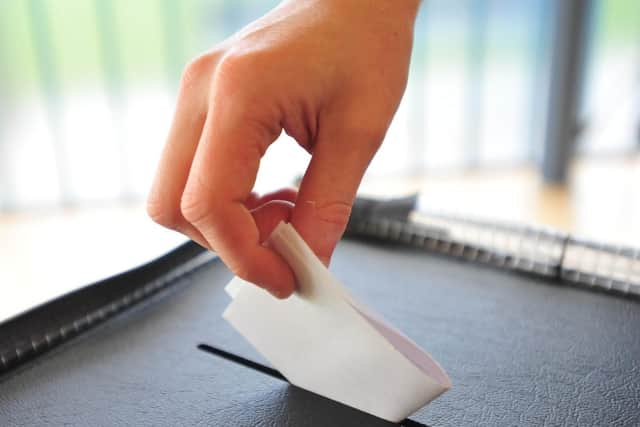Voter ID Scotland: What counts as voter ID for polling stations at the general election? What if I have no ID?
This year’s general election will be the first where voters need to show photographic ID before they can place their ballots.
Before a voter can even get their hands on the ballot slip, they will need to hand over a passport or driving licence, as the UK government looks to clamp down on electoral fraud.
Advertisement
Hide AdAdvertisement
Hide AdThe Scotsman takes a look at all you need to know about using photographic ID when you go to vote.


Why has voter ID been introduced?
The Electoral Commission has been recommending this since 2014 and, in 2016, the government’s anti-corruption champion Lord Pickles recommended the move was adopted.
The Department for Levelling-Up, Housing and Communities said last year the use of IDs was commonplace across the world and “widely acknowledged as an effective system for preventing electoral fraud”.
However, there are concerns it could discriminate against certain groups, such as disabled people, Gypsy, Roma and Traveller communities, older people, homeless people, those who are registered to vote anonymously, and trans and non-binary people.
What counts as voter ID?
As it turns out, quite a lot of IDs are acceptable, as follows:
- Passport issued in the UK, the Channel Islands, the Isle of Man, a British Overseas Territory, EEA state, Commonwealth country or Ireland;
- Driving licence issued in the UK, the Channel Islands, the Isle of Man or an EEA state;
- A blue badge;
- Scottish National Entitlement Card (such as over 60s bus pass, or under 22s bus pass);
- Other local travel cards issued by the UK government, Transport for London, or travel cards issued in Wales or Northern Ireland;
- ID card bearing the “proof of age standards scheme” hologram, such as a Young Scot card;
- Biometric immigration document;
- Ministry of Defence Form 90 (defence identity card);
- National identity card issued by an EEA state;
- Electoral identity card issued in Northern Ireland;
- Voter authority certificate;
- Anonymous elector’s document.
Can you bring a photocopy?
No – the original document needs to be shown.
What if you have no ID?
A person will need to apply for a voter authority certificate, which can be done once they have registered to vote.
When applying for this certificate, a person will need to provide their name – the same as the one used when registering to vote – as well as an address, date of birth and National Insurance number.
Those who don’t have a National Insurance number will need to provide another form of ID, such as a birth certificate, bank statement or utility bill. The electoral registration office will contact these individuals directly.
Advertisement
Hide AdAdvertisement
Hide AdIf that person still has no accepted proof of ID, someone they know can confirm their identity instead, known as an “attestation”. The person will still need to provide a photograph for a voter authority certificate, and although they have no expiration date, it is recommended they are renewed every ten years.
What happens when you get to the polling station?
Every voter will need to show photographic ID before being given a ballot paper.
A private area will be available if someone wants to have their ID viewed in private, such as a separate room or an area separated by a privacy screen, and voters can also ask for a female member of staff to do the checking.
What happens if your ID is refused?
A person will be asked to go home and return with another ID that is accepted.
Polling station staff will record who this happens to, including if that person then comes back later in the day with a valid ID. If an ID is rejected, that person can ask for a second opinion from the polling station’s presiding officer.
Is this the first time photographic ID has been used in Scotland?
For most people, yes. However, photographic ID was needed to vote in the Rutherglen and Hamilton West by-election in October.
Although this law covering the whole of the UK came into effect last year, it is also not an entirely new concept. In Northern Ireland, voters have had to show ID since 1985, and photographic ID since 2003.
You need to register to vote online
Anyone who is a UK or Irish citizen, a Commonwealth citizen living in the UK, or a foreign national living in Scotland with permission to stay in the UK, is eligible to register to vote.
Advertisement
Hide AdAdvertisement
Hide AdThis can be done online using your National Insurance number, or via the post by contacting a local electoral register officer. Unlike the Scottish Parliament elections, a person needs to be 18 or over on polling day to vote in a general election.
Comments
Want to join the conversation? Please or to comment on this article.